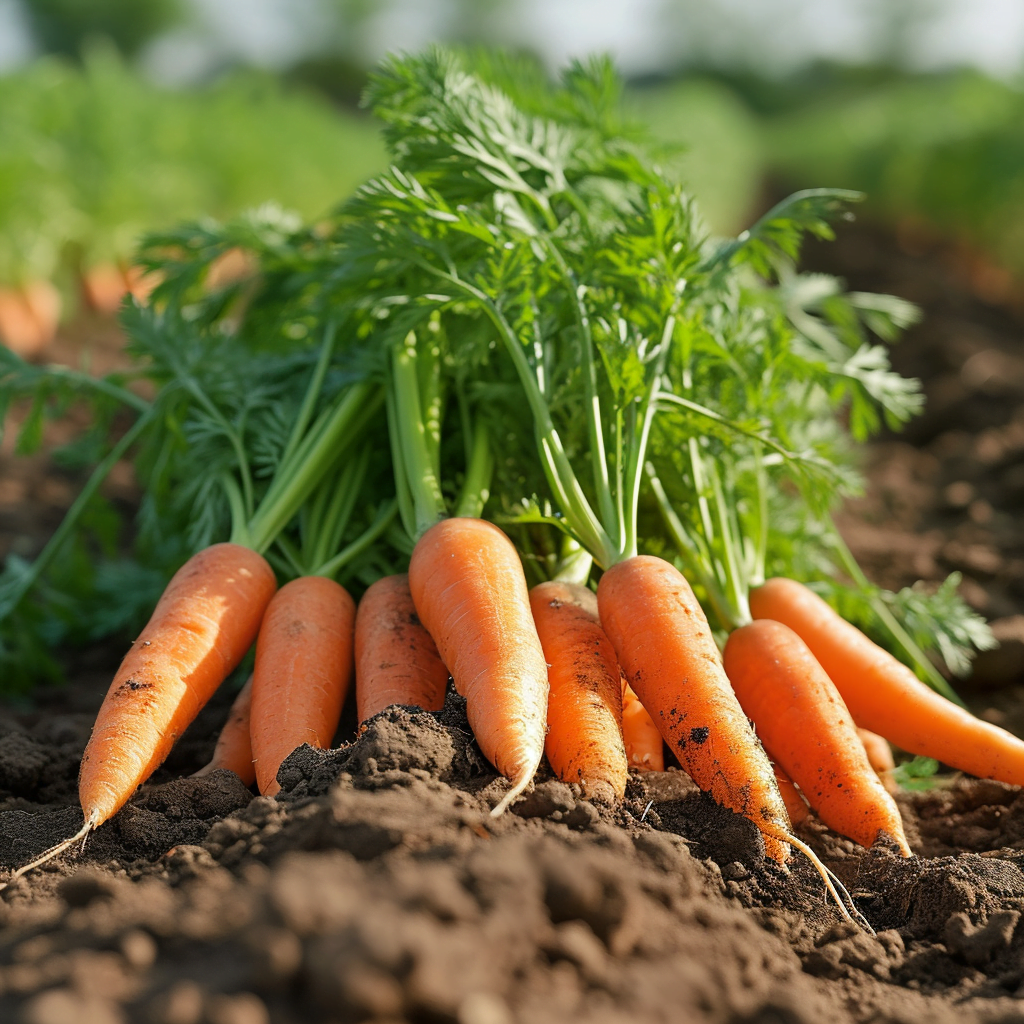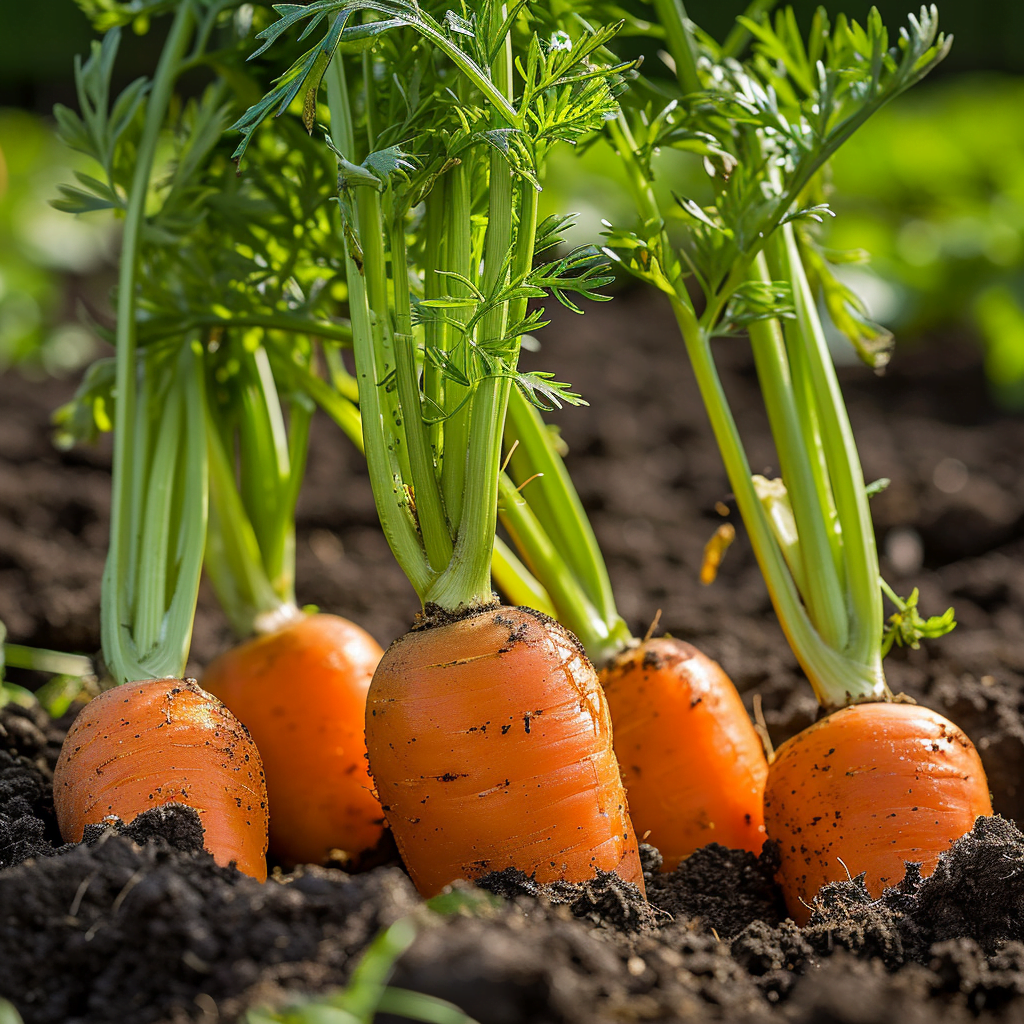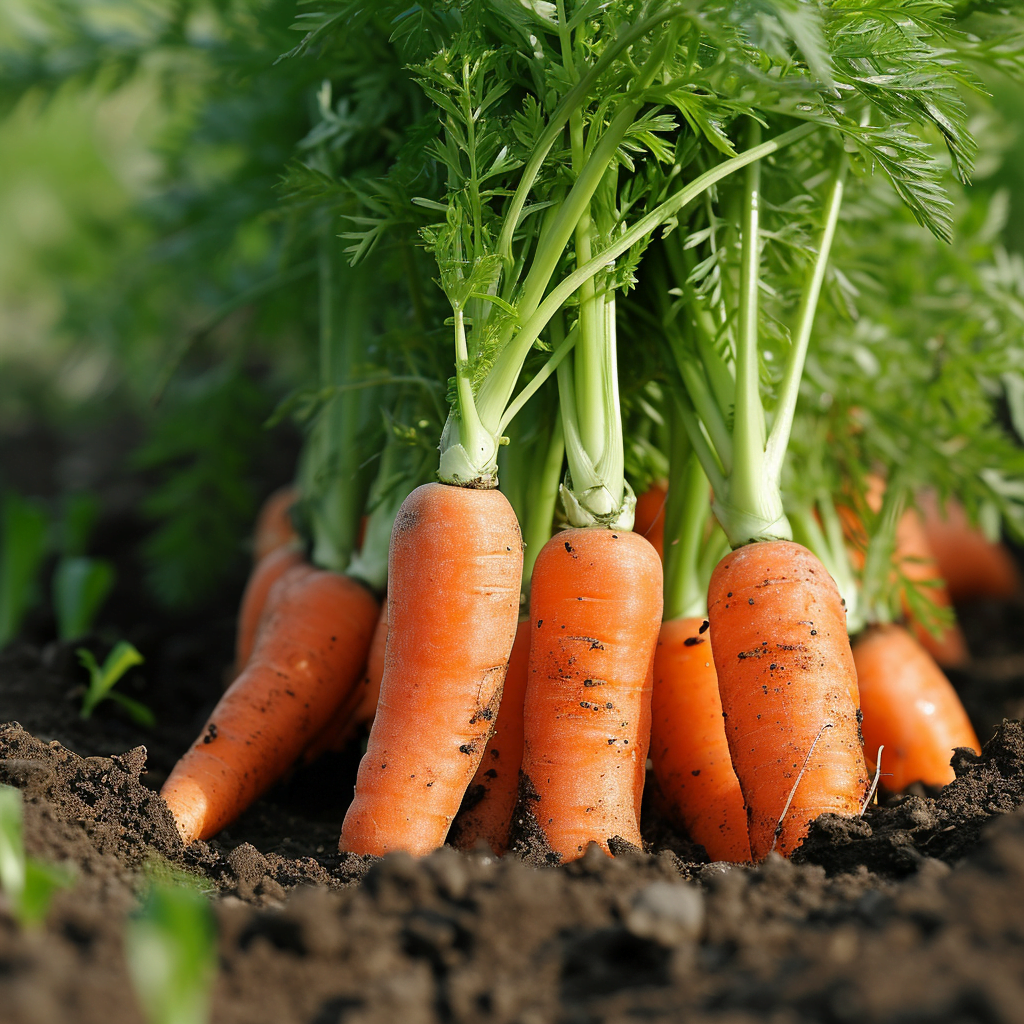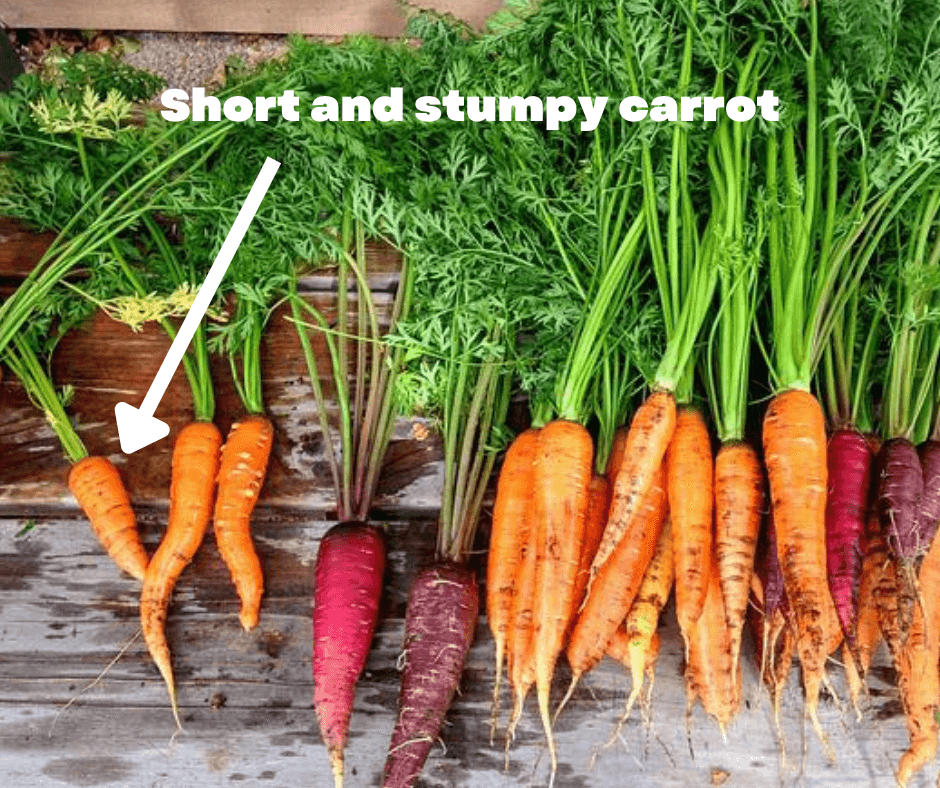So you’ve decided to try your hand at growing carrots in Arizona, but you’re not sure when is the best time to plant carrots in Arizona. Well, you’re in luck! In this article, we will explore the ideal time to plant carrots in Arizona, taking into consideration the unique climate and growing conditions of the region. Whether you’re a seasoned gardener or a beginner looking to try your hand at vegetable gardening, this guide will provide you with the essential information to ensure a thriving carrot harvest in the Grand Canyon State. So grab your gardening gloves and let’s get started!
Factors to Consider
Climate
The climate in Arizona plays a crucial role in determining the best time to plant carrots. With its desert-like conditions and hot temperatures, it is important to choose a planting time that allows the carrots to thrive. The hot and dry summers in Arizona are not conducive to carrot growth, so it is best to avoid planting during this time. Instead, it is advisable to focus on the mild, cooler seasons for optimum growth.
Soil Conditions
The soil conditions in Arizona can vary greatly depending on the region. It is essential to assess the soil quality to ensure successful carrot cultivation. Carrots prefer loose, well-draining soil with a good balance of organic matter. If the soil in your area is heavy and clay-like, it may be necessary to amend it with organic matter or compost to improve its texture and drainage.
Frost Dates
Understanding the average frost dates in Arizona is vital for determining the best time to plant carrots. Frost can be detrimental to the growth of carrots, so it is important to plant them after the danger of frost has passed. By knowing the average last frost date in your specific area, you can plan your planting schedule accordingly and protect your carrot crop from potential damage.

Best Time to Plant
Spring Planting
Spring is often considered the best time to plant carrots in Arizona. The mild temperatures and longer daylight hours create optimal conditions for carrot growth. By planting your carrots in spring, you give them ample time to develop and mature before the intense heat of summer arrives. This leads to healthier plants and higher yields.
Fall Planting
In addition to spring, fall can also be a favorable time to plant carrots in Arizona. As the temperatures start to cool down after the scorching summer, the soil remains warm, providing ideal conditions for carrot seed germination and early growth. Fall planting allows the carrots to establish and grow during the cooler months, resulting in sweet and flavorful harvests.
Spring Planting
Timeframe
For spring planting, it is important to consider the timeframe you have available for planting. In Arizona, the best time to plant carrots is typically between late February and early April. This timeframe allows the carrots to take advantage of the milder spring temperatures while avoiding the risk of frost.
Preparing the Soil
Before planting your carrots, it is crucial to prepare the soil properly. Start by loosening the soil to a depth of at least 8 inches. This will help promote root development and enable the carrots to grow straight and healthy. Additionally, mixing in organic matter such as compost or well-rotted manure can improve soil fertility and drainage.
Seed Selection
Choosing the right carrot seeds is essential for a successful harvest. Consider factors such as the variety, quality, and germination time. Some popular carrot varieties for Arizona include Nantes, Danvers, and Imperator. Select seeds from reputable seed companies to ensure high-quality and disease-resistant varieties. Additionally, pay attention to the germination time, as some carrot varieties may take longer to sprout than others.
Timeframe
Average Last Frost Date
To determine the best time to plant carrots in Arizona, it is crucial to know the average last frost date in your specific area. This date signifies when it is safe to begin planting without the risk of frost damage. In Arizona, the average last frost date can vary depending on the region. Consult your local agricultural extension office or use online resources to find the specific date for your location.
Soil Temperature
In addition to the average last frost date, it is important to consider soil temperature before planting your carrots. Carrot seeds require a minimum soil temperature of around 40°F (4°C) to germinate successfully. Use a soil thermometer to measure the temperature at the planting depth. If the soil is still too cold, it is best to wait until it warms up to ensure optimal germination and seedling growth.
Preparing the Soil
Loosening the Soil
To create an ideal environment for your carrot seeds, it is crucial to loosen the soil before planting. Use a garden fork or tiller to break up any compacted soil and remove any rocks or debris. By loosening the soil, you provide the roots of the carrots with the space they need to grow and access nutrients.
Adding Organic Matter
In addition to loosening the soil, incorporating organic matter into the soil can greatly benefit carrot growth. Add well-rotted compost or aged manure to improve soil fertility and structure. Organic matter helps retain moisture in the soil, prevents compaction, and provides essential nutrients for healthy carrot development.
Seed Selection
Variety
Choosing the right carrot variety is essential for successful growth in Arizona. Opt for varieties that are well-suited to the region’s climate and soil conditions. Nantes, Danvers, and Imperator varieties are popular choices in the state. Consider the expected size, shape, and flavor of the carrots to select a variety that meets your preferences and gardening goals.
Quality
When selecting carrot seeds, always choose high-quality seeds from reputable sources. Look for seeds that are fresh, viable, and disease-free. Avoid seeds that are discolored, moldy, or past their expiration date. High-quality seeds have a higher potential for germination and produce healthier and more productive carrot plants.
Germination Time
The germination time of carrot seeds can vary depending on the variety and environmental factors. Some carrot varieties may sprout within 10 to 14 days, while others may take up to three weeks. Consider the expected germination time when planning your planting schedule. Additionally, ensure proper soil moisture and temperature to promote faster and more uniform germination.

Fall Planting
Timeframe
Fall planting in Arizona typically occurs in late August and early September. By planting during this period, you take advantage of the warmer soil temperatures and cooler weather. The carrots have ample time to establish their root systems before winter arrives, resulting in a successful harvest during the cooler months.
Preparing the Soil
Similar to spring planting, preparing the soil is crucial for fall planting. Loosen the soil to a depth of at least 8 inches and remove any weeds or debris. Incorporate organic matter into the soil to improve its fertility and structure. Fall soil preparation sets the stage for successful root growth and ensures the carrots receive the necessary nutrients for development.
Seed Selection
When selecting carrot seeds for fall planting, consider the same factors as for spring planting. Choose varieties that perform well in cooler temperatures and have a shorter maturation time. By selecting the appropriate seeds, you increase the chances of a successful fall carrot crop.
Average Last Frost Date
Determining the Date
Knowing the average last frost date is crucial for successful fall planting. The average last frost date in Arizona can vary depending on the region. Consult your local agricultural extension office or reliable online sources to find the specific date for your area. By planting after the danger of frost has passed, you can ensure that your carrot crop remains unharmed.
Consider Microclimates
It is important to note that microclimates can exist within certain regions of Arizona. Some areas may experience colder temperatures or frost pockets, even if the average last frost date suggests it is safe to plant. Consider the unique conditions of your specific location and adjust your planting schedule accordingly to account for any potential microclimate variations.
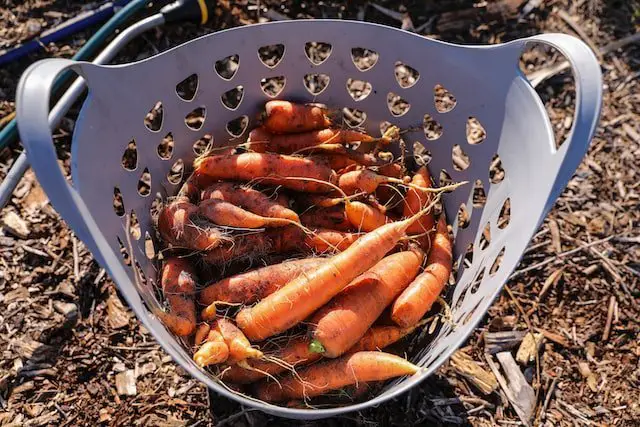
Loosening the Soil
Tilling the Ground
To create optimal growing conditions for fall-planted carrots, it is essential to till the ground and loosen the soil. Use a garden fork or tiller to break up any compacted soil and remove rocks or debris. By doing so, you improve soil aeration, drainage, and root penetration, leading to healthier and more productive carrot plants.
Adding Amendments
Fall soil preparation also involves adding amendments to enhance fertility and structure. Incorporate well-rotted compost or aged manure into the soil before planting. This improves soil nutrition and helps retain moisture during the cooler months. Amending the soil ensures that the carrot roots have access to essential nutrients needed for growth and development.
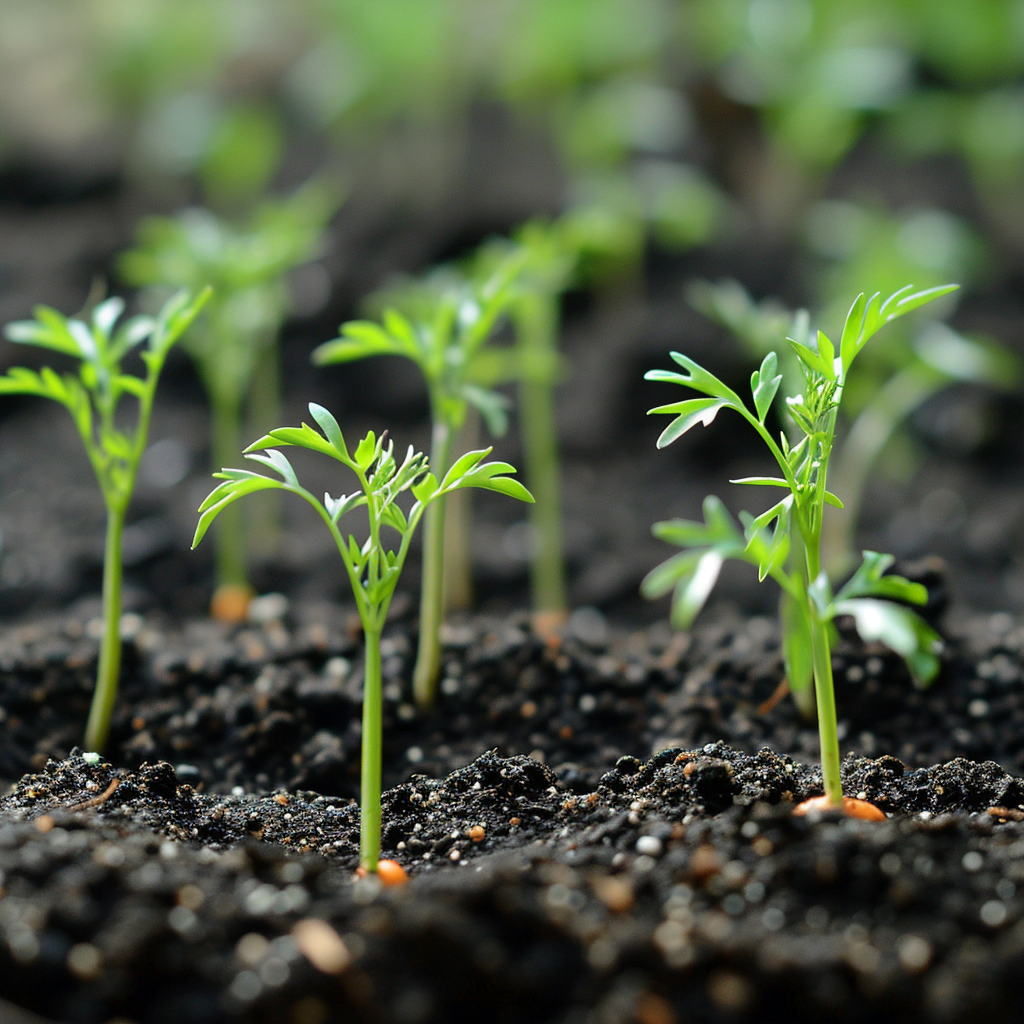
Germination Time
Factors Affecting Germination
The germination time of fall-planted carrot seeds can be influenced by various factors. Cool soil temperatures and the shorter daylight hours in the fall season can result in slightly longer germination times compared to spring. Ensure that the soil remains consistently moist throughout the germination period to facilitate seed sprouting. Additionally, protecting the seeds from drying out or being eaten by pests can further promote successful germination.
Tips for Successful Germination
To maximize the chances of successful germination for fall-planted carrots, consider the following tips:
- Keep the soil consistently moist, but avoid overwatering, as excessive moisture can lead to rotting or fungal diseases.
- Protect the seeds from drying out by applying a light layer of mulch over the planted area.
- Consider using row covers or protective structures to shield the seedlings from the cooler temperatures and potential pest damage.
- Maintain proper spacing between the seeds to allow adequate airflow and prevent overcrowding, which can lead to disease development.
By following these tips and taking the necessary precautions, you can ensure successful germination and establish a healthy fall carrot crop in Arizona.
In conclusion, the best time to plant carrots in Arizona depends on various factors such as climate, soil conditions, and frost dates. Spring and fall are generally considered the optimal seasons for carrot cultivation in the state. However, it is essential to consider the specific timeframe, soil preparation, seed selection, and germination requirements to maximize the chances of success. By understanding these factors and following the recommended guidelines, you can enjoy a bountiful harvest of delicious and nutritious carrots in your Arizona garden.
